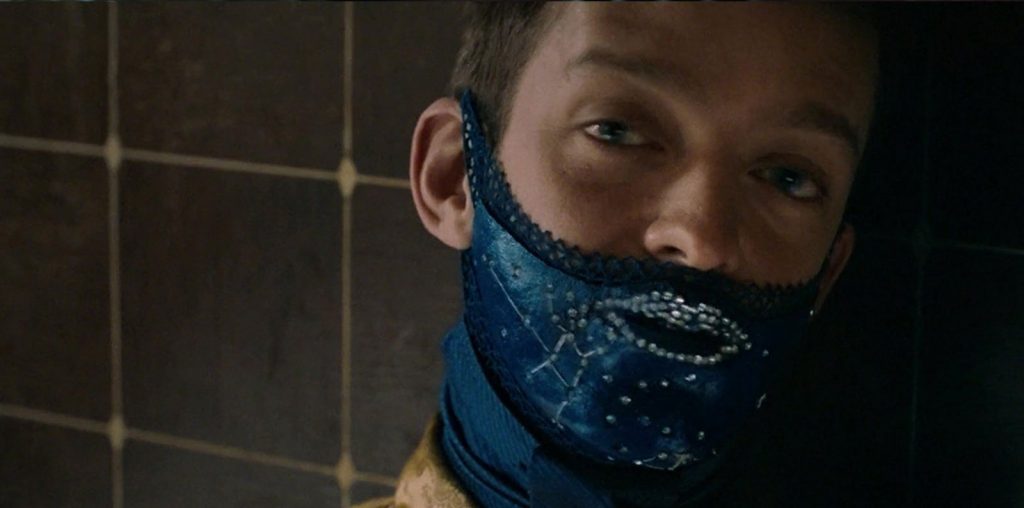
When did you originally decide to self-distribute Mau Mau Sex Sex? Had you been in touch with established distributors before going out on your own?
Self-distribution was not our first choice. We entertained several offers from notable distributors, which amounted to exclusive rights for them, and no money down for us. Our only reasonable choice was to embrace self-distribution, despite the formidable challenges. After all, we had the most to lose and the most to gain.
When you first plotted the distribution of the film, what considerations went into your research and planning?
Because Mau Mau Sex Sex is a documentary with no marquee talent attached, it was clear that we had to establish a perceived value of the movie. If you want to make money in TV broadcast, cable and home video sales, the cache of a theatrical run will make all the difference. We decided that if we opened in New York and got positive reviews, it would launch us out of the gate with some momentum. The trick was to pull that off as a very low budget enterprise. We were successful, thankfully. We cold called three Manhattan theaters with video projection capability and offered them a screener. They all wanted to book it after they took a look. Our critical notices in the New York media, particularly a positive review in the New York Times helped us book the movie in theaters across the country, and now internationally.
We avoided film festivals, unless they timed to critical events, such our opening in New York for advance publicity purposes. The Santa Barbara Film Fest invited us to play two weeks ahead of our NY opening, which resulted in a Variety review, and we also played at the International Documentary Festival in Amsterdam, which stimulated international sales through their market. But two other festivals that we played were useless to us, and we turned down the rest. We only go to festivals that offer a market program, or something in return for exploiting your movie, such as attending buyers and meaningful press.
We chose this strategy because of what we encountered as myopic political content correctness in the documentary world. If we should someday distribute a documentary regarding a subject more appropriate (like less funny, happy and sexy — and more struggle oriented — and I’m only half-kidding here) for such venues, marketing may benefit from a more extensive festival strategy. Otherwise, you can shoot your publicity wad in the festival’s city when it shows, and enjoy none of the ticket sales. So, if you ever want to open in that city again, you won¹t get the publicity and have to spend money to buy advertising space to draw fresh ticket buyers. Some festivals overseas are more progressive in that they offer box office splits of ticket sales akin to a standard booking arrangement, and handle the publicity and venue. We are pursuing those opportunities to help seed potential broadcast sales in those territories.
What was the average budget for opening the film in a city by city basis? And where did the money go?
New York by far was the most expensive city to open. The theaters there demand that you run ads in the Village Voice and New York Times, which cost a pretty penny. Don’t ever expect to make money in New York theaters unless you have a New York-themed doc, like “Dark Days.” New York audiences have so many choices, and unless you pay a fortune in advertising to keep your movie in their consciousness, or have a special interest or ethnic theme to promote on a grass roots level, it can be lost in the shuffle very easily–even when you receive plentiful and positive press coverage and reviews.
New York is the only city where we worked with a publicity firm, which was referred to us by Cinema Village, the theater where we played. They did a great job of delivering all the major press, including an interview in the New York Times and even an original art piece on the movie page of the New Yorker! Our experience taught us to go with the smaller publicity agencies–they are more scaled to the small movie and will work much harder for you, unlike the big, fancy agencies who didn’t even return our phone calls, and would have charged us 10 times the amount, and probably delivered less.
New York cost well under $10,000 to open including ads, artwork, trailer prep, ad space and publicity, hotels and expenses which is still about a third of what it can cost. Other cities cost us nothing up front, as we made a back end deal with theaters to pay for advertising space out of our share of the box office take. When possible, we booked the movie at what are known as “calendar houses” where customers are mailed scheduled listings of movies shown at the theater, saving us advertising expenses. We did our own publicity in every city (except New York, of course) by either calling the media directly or going through the theaters’ publicity agent.
One footnote: distributors warned us that several theaters would not pay us, because many distributors only get paid when they threaten to hold back the next picture from them. We were told that as a self-distributor, we would not have that leverage (with only one movie). I’m happy to say that no theater stiffed us, even the most notorious! All of our experiences with theaters were really positive.
Get the rest of the interview in part three of HAVE SMUT, WILL TRAVEL: A TED BONNITT INTERVIEW>>>
